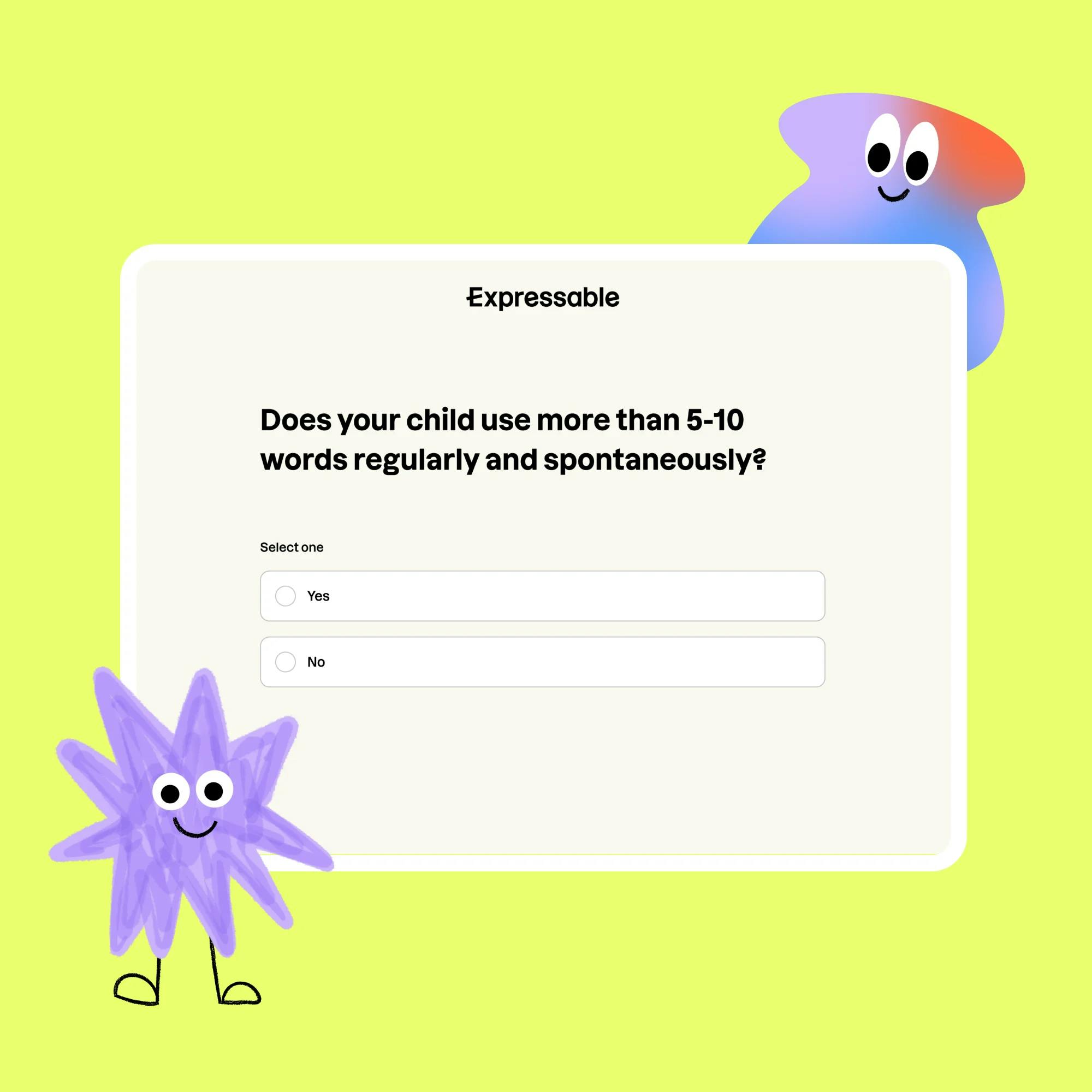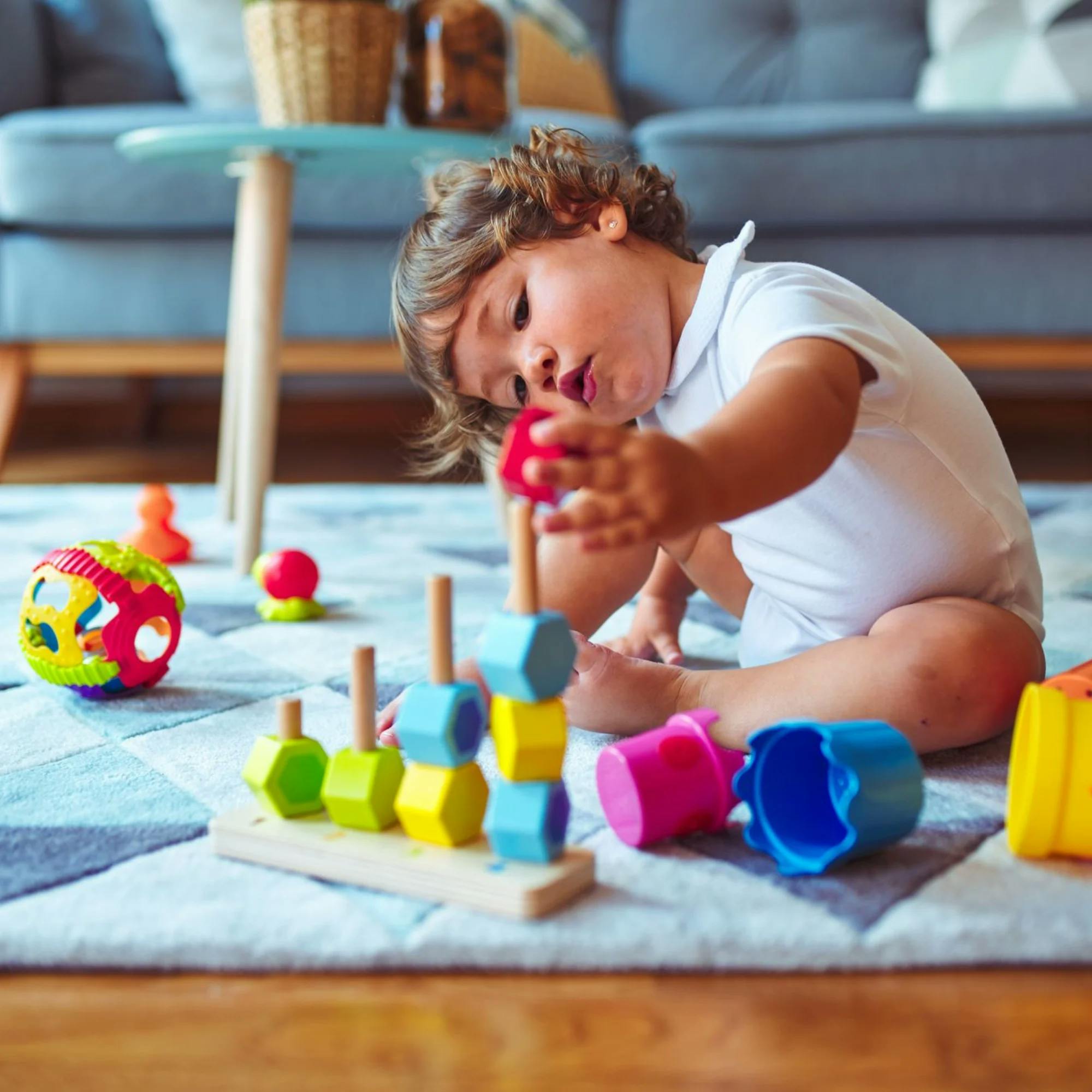As speech-language pathologists, our job doesn’t end once the speech therapy session is over. In fact, one of the most important aspects of our profession is coaching parents and caregivers on techniques they can use at home to elicit speech and language with their child.
In this world, speech therapy doesn’t last just 30 or 60 minutes a week. These valuable skills should be practiced regularly, during everyday routines. That’s how children learn best, make the most progress toward their goals, and generalize new skills into their home environment.


Below are 15 communication strategies that speech therapists use--and now you can, too! Each of these techniques is tried and true, as well as confirmed through evidence-based practice. Start using them today!
1. Give your child choices
No one knows your child better than you. And this special connection means you can probably anticipate their needs and wants--in many cases, before your child can communicate them!
While this saves time for busy families, it can also limit your child’s opportunity to use and practice foundational language skills.
This is why providing choices is so impactful. We don’t always want to just give a child something; we want to encourage them to independently make requests by using language. We also want them to learn the vocabulary needed to answer open-ended questions, such as “What do you want to play?”
By giving your child a choice of two activities, it motivates them to respond using language to communicate their desires. You might say, “Do you want the blocks or the bubbles?”
As an added bonus, offering choices can also decrease any frustration that might be caused when you don't correctly guess what your child wants.
2. Model simple language for your child
Imitation isn’t just a form of flattery; it's an important technique to help children learn new sounds and words.
Children learn language by absorbing it from the people around them--and who spends more time with your child than you? Modeling simple language for your child enables them to imitate and begin using those sounds and words independently.
When providing a model and naming an object, here’s a trick: Bring the object close to your mouth. That’s because kids tend to focus on the toy or item rather than the person naming it. By putting the item by your mouth (before handing it to them), your child will begin making an association between the item being named and how you're saying it.
3. Use parallel talk to narrate what you're doing
Providing children with a language-rich environment is essential. One easy way to do this is with a concept called parallel talk. This simply means narrating actions as you’re doing them.
For example, let’s say your child is watching you cook dinner. You could say, “I’m stirring the batter and now I’m pouring it into the pan. Oh, the oven is hot!” Or, when playing with your child, you might say, “Your car is so fast! Vroom!”
After enough practice, children will start to associate this language with the corresponding actions, and hopefully begin to do their own parallel talk!
4. Expand your language into longer phrases
Doesn’t it seem like every child’s favorite word is “no?”
Well, we might as well take advantage of it by expanding that special word to a longer phrase: “No what?”
If your child gives you a “no,” trying saying, “no cookie” or "no juice." Or, if they request “more,” expand that to add, “more bubbles.”
Expansion is all about helping your child progress from simple, one-word utterances to longer two- and three-word phrases. It’s crucial to work on language expansions in your child's natural, everyday life. Make sure to take advantage of what your child is saying and doing in that exact moment, and use it to model a phrase that's one word longer than what they are giving you.
When you provide this model, they will consistently hear what you expect of them and, in turn, begin expanding and using more complex language.
5. Use visuals
Everything is new for a toddler. While they’re rapidly learning new language skills, it’s important for caregivers to support this language acquisition every step of the way. Visuals are a great tool in the parenting toolbox. Let’s explore how to use them.
Some children have trouble understanding the various transitions or routines that happen throughout the day. Putting pictures of daily routines on a board or in a book can help your child begin to anticipate what their day looks like--and decrease any possible negative reactions. They can even help decide what activities they’ll participate in by selecting a play activity that occurs after snack and adding it to the board.


Similarly, a family photo book can help your child learn the names of their siblings, pets, relatives, and friends. Taking time to point to and label people in the photos will encourage your child to do the same.
Another helpful visual aid that many families already have in their home is a kitchen timer. This can help your child more easily adjust to daily transitions or routines. For instance, if getting your toddler ready and out the door is a common challenge, use a timer to indicate it’s ready to clean up and leave the house. This can serve as a great reminder!
6. Try expectant waiting
Picture riding a roller coaster. It’s inching up and climbing the steep slope.
You know all that anticipation you feel right at the top, moments before you come speeding down the hill?
On a much smaller scale, this is the feeling we want kids to experience right before imitating an action. For instance, if you suddenly stop one of your child’s favorite activities, like blowing bubbles, we want your child to feel a sense of anticipation and excitement.
While they’re waiting expectantly, you could say, “Oh, you want more bubbles? More?” This encourages them to respond with a word or gesture to indicate their desire to continue.
If you’re rolling a car back and forth, you could say, “Ready, set…” and then pause. The whole idea is that you want to wait for your child to say “go!” before pushing the car. This not only increases their use of language, but it gets them excited and expands their attentiveness.


7. Give positive reinforcement
It’s so easy to tell a child “Don’t do that” or “No.” And often it could very well be a matter of safety.
At the same time, it’s just as important that kids know when they’ve done something positive.
Often, we might fall into the habit of saying “Good job.” But good job doing what? Why not try, “I love the way you cleaned up your toys all by yourself!” or “Wow, you ate all of your broccoli! That is amazing!” It’s important to be specific and highlight exactly what your child did well.
We all love and respond to positive reinforcement. Your smile, praise, compliment, and high five can also encourage your child to use more language throughout the day.


8. Try a little bit of sabotage
Sometimes, a little frustration can be a good thing, especially if it motivates children to communicate.
We’ve already mentioned the power of giving your child two choices and letting them pick. But what if you deliberately give them the wrong one? This creates the opportunity for your child to correct your mistake!
You can also try positioning your child’s toys or a tasty treat just slightly out of their reach. While they may be temporarily upset, this simple act of sabotage can quickly teach children they need to use language to request help.
Back to our previous tip above, if they do say “help” or “open,” try expanding their request to a two-word phrase, like “help me” or “open please.”
9. Repeat whatever strategy you're using
Just as your child might watch the same "Paw Patrol" video over and over again until they have it memorized, repetition is key to helping reinforce speech therapy techniques and learning.
Using all the language-building concepts described in this article may feel tedious at times, but this repetition enables your kiddo to learn new words, expand their vocabulary, and grow their communication skills.
10. Try teaching sign language
When working with toddlers, many speech therapists will introduce and encourage sign language. For some parents, this can be a cause of concern, as they may worry their child will never learn to vocalize.
However, this is far from the truth. In fact, using sign language is an excellent way to help children transition to verbal language.
For toddlers, it’s often easier for a child to gesture “all done” than it is for them to put those words together and be understood. With signs, we typically start with the basics: help, all done, more, eat, drink, go, and stop, providing a verbal model along with the gesture.
We don’t expect a child to continue using sign language once they start verbally requesting. But for a frustrated kid who can’t seem to get their point across, signs are a great way to help them communicate.


11. Sing songs
The lyrics to a song never change, making music a great opportunity for children to learn new words.
For example, there are a ton of learning moments packed into the song “Wheels on the Bus.” It can help kids learn directions like “up,” “down,” “open,” and “shut.” The song “Head, Shoulders, Knees and Toes” helps children learn body parts and where they’re located. Reinforcing these songs with gestures increases a child’s vocabulary as well as their imitation of sounds and words. It’s the perfect activity!
Bonus tip: Use close phrases. When singing a song to your child, leave the phrase open and wait for the child to complete it. For instance, “Old McDonald had a farm---”. Make sure to praise them for their attempt, even if they don’t finish the lyrics. Then complete the phrase and move on to the next.
12. Try the contingency technique
Following directions doesn’t come easy (or willingly) for many kids. And few things can be as frustrating for parents.
In these cases, the contingency technique may be helpful. This entails making a task that your child “wants” to do contingent on a task they “need” to do. For example, you could say, “First we read this book, and then you can play dinosaurs,” or “Once you finish eating your vegetables, you can play outside.”
This reward mechanism helps your child follow instructions so that ideally everyone gets what they want!


13. Eliminate distractions
Young children learn language through play-based activities. When engaging with your child, it’s essential to eliminate all possible distractions that take away from the activity and quality bonding time. And this goes for parents, too! It means turning off the television, putting away your phone, and hiding other stimuli.
The amount of time spent playing with your child is just as important as the quality of that time. It can be a quick 10-minute break to stack blocks while using techniques we’ve discussed, such as parallel talk and giving a choice. This will go a long way in helping to expand their attention and language skills.


14. Read lots of books
Pre-literacy skills can be worked on well before a child begins reading text or using words consistently. And there’s few gifts that parents can give their child more powerful than a love of books. Reading stimulates your child’s imagination, expands their vocabulary, develops their listening and comprehension skills, and eventually helps them succeed academically in the classroom.
A toddler can learn to turn the pages of a book and point to objects of interest while you name them. While it may be difficult to do this throughout the day with an active kiddo, reading before a nap or bedtime routine can yield better results.
Initially, the story itself may not be as important as exploring the pictures and going sequentially through the book. However, as your child’s language and attention grows, they’ll be ready to hear the story and maybe even tell you part of it. Check out this quick video, where one of our speech therapists demonstrates a few of these tips with a favorite board book for toddlers!


15. Be silly
As speech therapists, we often tell parents that if it doesn’t feel awkward, you’re still not being silly enough.
Children respond to strange sounds, silly faces, and exaggerated speech. Get on their level, making animal sounds or beeping like a car. Use a mirror in the bath to make funny faces. Give your child a heightened level of energy during play activities to let them know it’s okay to experiment with their voice.
The sillier you are, the more engaged and ready to participate they'll be. And that's where speech and language learning really takes off.













